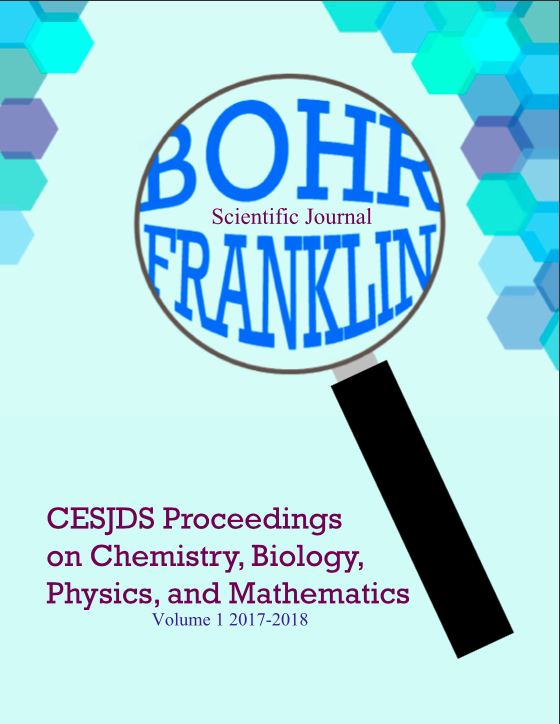Science in humanities: New STEM journal showcases student work
The cover page of the Bohr-Franklin Scientific Journal details the subjects it will cover. This is the first year the science magazine has been published.
April 18, 2018
While many students were relaxing and not thinking about school at camp or during the summer, alumni Ezra Loeb (‘18) and Abbie Svoysky (‘18) began talking to Dean of Students Roz Landy and science teacher Daniela Munteanu about creating the first scientific journal at CESJDS, the Bohr-Franklin Scientific Journal.
Loeb and Svoysky started the journal because, while there are many school publications and literary magazines there is not one for science, and they wanted to show off what JDS students have been doing in science.
“It would be our optimal goal that some students will take a look at it and see the work that has been done and inspired in the sciences by our school,” Loeb said.
The journal is different from other scientific journals because it is at a high school rather than collegiate or professional level. In addition, while in most scientific journals, a majority of pieces are presenting new discoveries, JDS’ primarily includes those explaining already discovered information.
“You could think of it as a combination between a real academic journal, where we are publishing new findings in a field and it is also like Melting Pot or Reflections [the school literary magazines], where we’re trying to showcase work done by our students,” Loeb said.
The journal is written so everyone who reads it will be able to understand and learn something new and to also explore what the students of JDS are working on inside and outside of school.
During the summer while Loeb and Svoysky were figuring out the logistics of the journal, they decided on the name of the journal.
“I [said] we should have one female and one male because I think that is important and obviously we picked Jewish ones because it’s JDS,” Svoysky said.
They also wanted to name the journal after scientists the students would be familiar with, so they chose Niels Bohr because in both eighth and tenth grade, students learn about the Bohr model of the atom. They then chose Rosalind Franklin, who discovered the shape of DNA, which is covered in both ninth-grade biology and genetics.
To start the process of creating the journal they needed to get a staff. When Loeb mentioned the journal in his physics class many students approached him and Svoysky to be part of the journal. Junior Jacob Sher was one of those students who joined the journal and became one of the section editors for math.
The process of creating the journal took the entirety of the first semester and after finding a staff, they began to ask for submissions from students to put into the journal.
Chemistry section editor and junior Tamar Eisen said that for every section there were a couple pieces that were from projects done as part of internships, for organizations such as the Uniformed Services University, NIH and the Technion.
After getting enough submissions, the editing process began. Each section editor had to edit the pieces with the help of peer editors, then they were given to Munteanu and the other science teachers for a final round of editing.
“Some things were, yes, grammatical that we were editing, but a lot of things were just redirecting the students to make sure they were explaining a concept or giving enough context so that the average reader would be able to actually understand what they were trying to explain or what information they were getting from an article,” science teacher Kelly Grosskurth said.
After all the pieces were edited and put into the correct format, the journal was completed by the end of the semester and was submitted for printing on Feb. 8.
Originally the goal of the journal was to publish twice a year, but after seeing how long it took to create the first edition, editors plan to keep it to an annual publishing. Sher believes that in future years they will be able to progress and publish two volumes a year.
Eisen said, however, that she is concerned that the articles will become repetitive if they print more than once a year since many of the pieces come from assignments which are part of every year’s curriculum and there are also only so many students who do outside research. Nonetheless, those involved with the journal, including Grosskurth, feel that it is worth the effort.
“[C]oming together to collaborate and make something that is just showcasing the science department and also kind of making other students in the school aware of all of the things that they are working on and interested in,” Grosskurth said. “I think that’s great to just show and demonstrate that.”







